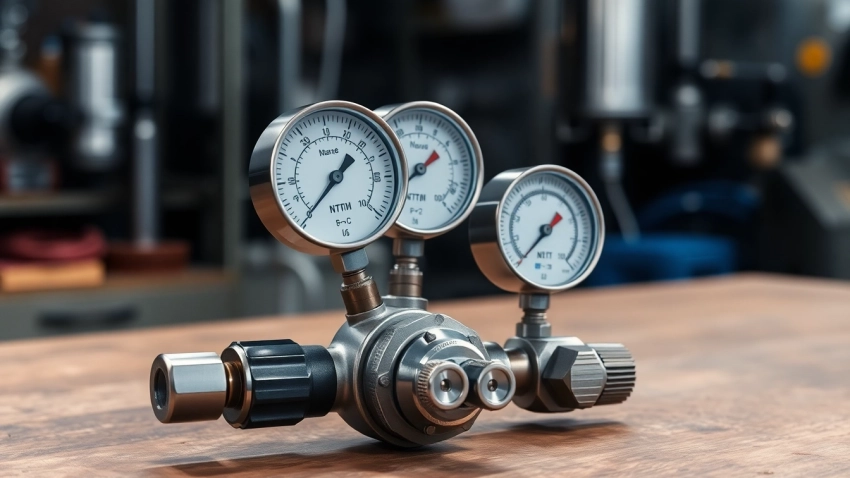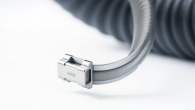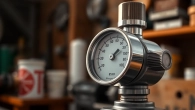
Essential Guide to Nitrogen Regulators: Types, Uses, and Best Practices
Understanding Nitrogen Regulators
Nitrogen regulators are essential devices used in various industries to manage the pressure and flow of nitrogen gas from storage cylinders or systems. These regulators ensure that nitrogen is delivered at a pressure that is suitable for different applications, such as in HVAC systems, food and beverage production, and industrial processes. The nitrogen regulator serves a critical function by regulating the pressure from a high-pressure source to a low-pressure application point while maintaining a consistent flow rate. Understanding the fundamental aspects of nitrogen regulators allows users to choose the right equipment for their needs, ensuring safety and efficiency in operations.
The Role of a Nitrogen Regulator in Gas Control
The primary role of a nitrogen regulator is to control the outlet pressure and flow rate of nitrogen gas, enabling consistent performance across various applications. By adjusting the pressure of the nitrogen gas, these regulators facilitate accurate operation of tools and machinery that require specific pressure levels. For instance, in the HVAC industry, a nitrogen regulator is used to pressure test systems to ensure they are leak-free, while in the beverage industry, it helps maintain the proper carbonation level in drinks.
Different Types of Nitrogen Regulators
Nitrogen regulators come in a variety of configurations, each designed for specific use cases. The main types include:
- Single Stage Regulators: Ideal for applications where stable delivery pressure is needed, these regulators control pressure in a single-step process.
- Two Stage Regulators: Offering greater precision, two-stage regulators manage high-pressure gas in two steps, making them suitable for fluctuating demand.
- High-Pressure Regulators: Designed to operate at higher pressures, these regulators are essential for applications requiring significant force.
- Low-Pressure Regulators: Used in applications where lower pressures are required, ensuring that the system operates safely within specified limits.
- Preset Regulators: Typically used in situations where a constant pressure is needed, these are adjusted at the factory and cannot be easily changed by the user.
- Adjustable Regulators: Useful for varied applications, these regulators can have their output pressure modified by the user.
Key Components of a Nitrogen Regulator
Understanding the key components of a nitrogen regulator is crucial for ensuring its proper function and maintenance. These components include:
- Inlet Connection: The point where the nitrogen supply connects to the regulator, often fitted with a specific gas fitting, such as CGA580.
- Pressure Gauge: Displays the current output pressure, allowing users to monitor performance.
- Adjustable Control Knob: Used to increase or decrease the output pressure based on application needs.
- Outlet Connection: Where the nitrogen exits the regulator to the application, typically fitted with safe and compatible fittings.
- Diaphragm: A flexible component that helps control the flow of gas based on the pressure differences.
How to Choose the Right Nitrogen Regulator
Selecting the appropriate nitrogen regulator involves evaluating several key factors to ensure it meets the specific needs of your application. Key considerations include the required pressure, flow rate, and the environment in which the regulator will be used.
Evaluating Your Needs: Pressure and Flow Rate
Before purchasing a nitrogen regulator, it’s essential to assess your application’s pressure and flow rate requirements:
- Pressure Requirements: Determine the operational pressure range necessary for your equipment. Different types of tools may require varying pressures; therefore, understanding these details will ensure effective operation.
- Flow Rate: Calculate how much nitrogen will be needed for your application. Higher flow rates may necessitate more advanced regulators that can handle these requirements efficiently.
Essential Features to Look For
When selecting a nitrogen regulator, consider these crucial features:
- Material Construction: Look for regulators made from durable materials, such as brass or stainless steel, to ensure longevity and resistance to corrosion.
- Safety Features: Important safety mechanisms, such as gauges that prevent over-pressurization and relief valves, provide additional peace of mind.
- Compatibility: Ensure that the regulator is compatible with your nitrogen source and application fittings to prevent leaks and inefficiencies.
- Brand Reliability: Opt for well-known brands with a reputation for quality and reliability, which often reflect in the performance and lifespan of the product.
Brands and Recommendations
Several reputable brands produce nitrogen regulators renowned for their quality, reliability, and performance. These include:
- Victor Technologies: Known for robust designs and superior reliability, Victor regulators are commonly used in industrial applications.
- Uniweld Products: Their nitrogen regulators are tailored for applications like HVAC systems and are recognized for their durability.
- Airgas: Offering a wide range of industrial gas regulators, Airgas is a favored choice among professionals for their safety and performance features.
- McMaster-Carr: This supplier provides a vast selection of nitrogen regulators suited for various applications, emphasizing quality and service.
Installing Your Nitrogen Regulator
Proper installation is critical for ensuring the safety and accuracy of nitrogen regulation. Below are detailed steps to guide the installation process effectively.
Step-by-Step Installation Guide
- Start by ensuring that both the nitrogen cylinder and the regulator are in a clean and dry area to prevent contamination.
- Check all connections and fittings for compatibility before attaching the regulator to the cylinder.
- Carefully screw the regulator onto the cylinder valve, ensuring that it is tightened adequately to prevent leaks.
- Open the cylinder valve slowly while monitoring the gauge to confirm that it is functioning correctly.
- Adjust the output pressure using the control knob as required and check for leaks with a suitable leak detection solution.
Common Mistakes to Avoid
During installation, several common mistakes can lead to safety hazards or performance issues:
- Failing to inspect for compatibility between the regulator and the nitrogen source can lead to leaks or system failures.
- Not using proper sealants or Teflon tape on threaded connections can result in gas leaks.
- Overtightening connections can damage components and lead to potential failures.
Safety Precautions During Installation
Prior to and during the installation process, it’s crucial to observe safety measures:
- Always wear appropriate personal protective equipment (PPE), such as gloves and safety goggles.
- Ensure the area is well-ventilated, as gas leaks can displace oxygen and create hazardous environments.
- Familiarize yourself with emergency procedures in the case of a gas leak or equipment malfunction.
Maintaining Your Nitrogen Regulator
Regular maintenance is essential for ensuring the longevity and efficiency of your nitrogen regulator. Here are some best practices for proper care:
Routine Maintenance Tips
Implementing routine maintenance will improve the performance and lifespan of nitrogen regulators:
- Inspect the regulator periodically for signs of wear, leakage, or corrosion.
- Clean the regulator as needed, following the manufacturer’s instructions to avoid damaging components.
- Replace filters and check for any blockages that may impede the gas flow.
When to Replace Your Nitrogen Regulator
Recognizing when to replace a nitrogen regulator is vital for operational safety:
- If you notice persistent leaks despite tightening fittings and components, it may indicate that the regulator needs replacement.
- Inconsistent pressure readings can signal that internal parts are worn or damaged, necessitating replacement.
- Any physical damage or distortion on the regulator should prompt an immediate assessment for replacement.
Identifying and Fixing Common Issues
Sometimes, users may encounter issues while using nitrogen regulators. Here are common problems and their solutions:
- Problem: Fluctuating outlet pressure.
Solution: Check for blockages or restrictions in the line, and verify that the cylinder pressure is adequate. - Problem: Persistent leaks.
Solution: Inspect and reseal connections, or replace damaged components. - Problem: Gauge failure.
Solution: If the gauge does not read accurately, calibrate or replace it as needed.
Applications of Nitrogen Regulators Across Industries
Nitrogen regulators are widely used across various industries, each with unique applications that enhance operational efficiencies. Understanding these applications can help businesses maximize their use of nitrogen technology.
Use in HVAC and Refrigeration
In the HVAC industry, nitrogen regulators are crucial for pressure testing systems. During installation and maintenance, they are utilized to ensure that air conditioning and refrigeration systems are airtight and leak-free. By applying nitrogen as a pressure source, technicians can effectively identify leaks and maintain the integrity of the systems before they are put into operation.
Nitrogen Regulators in Food and Beverage
The food and beverage industry utilizes nitrogen regulators primarily for purging and preserving products. Nitrogen is often used to displace oxygen in packages, extending the shelf life of perishable items and preserving flavor. In brewing applications, nitrogen regulators help control the carbonation levels in beverages, ensuring optimal taste and quality.
Industrial Applications and Benefits
Nitrogen regulators find extensive use in various industrial processes, including manufacturing, welding, and chemical applications. By providing a controlled source of nitrogen, they enhance the quality of products and prevent oxidation, thus improving safety and efficiency. The right nitrogen regulator can aid in preventing fires and explosions by eliminating combustible materials in certain processes.








Leave a Reply